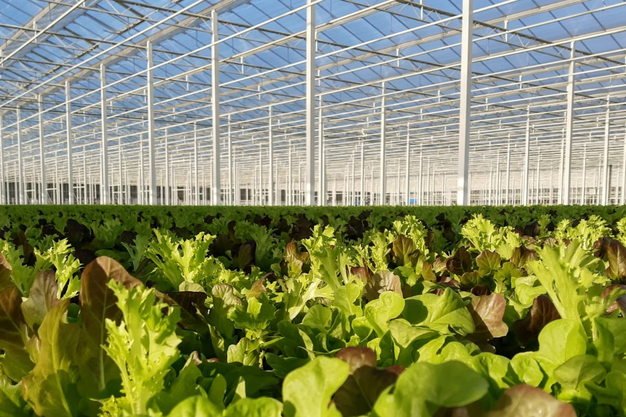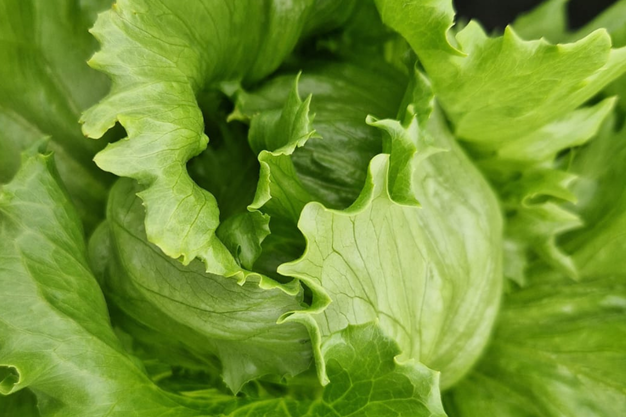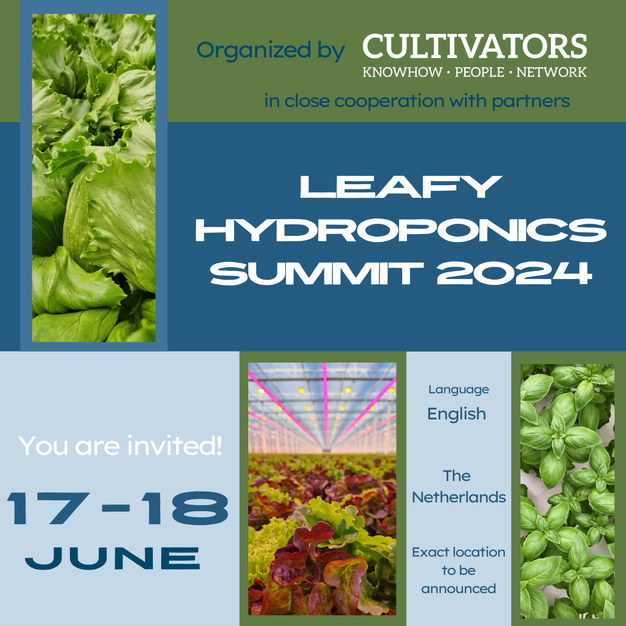"Worldwide, we observe a shift towards indoor cultivation in leafy greens. Driven by supply security, reduced water and fertilizer usage, and, of course, the desire for maximum yield per square meter. Leafy greens are logically following the trend set by well-known crops such as tomatoes, cucumbers, and bell peppers," says Tim van Hissenhoven from Cultivators.
The consultancy company is organizing a two-day event in June for the global leafy greens sector because, despite its potential, this sector also faces challenges. "The techniques are available, but achieving cultivation optimization and financial success remains a challenge. The choice of cultivation systems, techniques, varieties, and packaging is crucial, as is understanding who will buy your product and what the customer wants. That becomes increasingly important."

More certainty in lettuce
Both in North America and Europe, open-field cultivation of lettuce is gradually being replaced by supply from protected cultivation, known as CEA (Controlled Environment Agriculture) in North America. Food safety is a significant driver in both regions, as is supply security. In Europe, extreme weather conditions in the Mediterranean region last year led to high prices, while California is experiencing a severe water shortage. "We see these kinds of problems worldwide. In Australia, KFC served burgers with cabbage last year because there was no lettuce available. That's something you want to prevent," says Tim.
The processing industry is also showing interest, especially in the Teen Leafs concept. On the one hand, because the cutting waste is significantly lower than externally grown lettuce, where the outer leaves need to be discarded. On the other hand, it also saves a step in processing, as in some cases, the supply does not need to be washed anymore. "The processing industry demands even greater certainty in terms of delivery and food safety than Global GAP: they want IFS Food. These standards can be achieved with CEA lettuce cultivation."
European customer contact
There are indeed good opportunities for indoor cultivation of leafy greens. However, the situation in Europe is not directly comparable to the growth in North America. "In America, 95% of the supply was grown in California. The distance and the costs of a two-day journey make it easier to see that it's better to cultivate closer to the end customer, especially in combination with the water shortage: cultivating lettuce outdoors is almost asking for problems." This situation is not directly comparable to Europe, where distances are shorter, and the available products are different. "Ultimately, the business case is decisive, and for that, connection with the customer is crucial in Europe. As a grower, you want to understand the customer product requirements and the price setting to make the business case."
It is important to consider that setting up a cultivation system for leafy greens is complex and requires substantial investments. "The greenhouse builders \know how to build a tomato greenhouse by now, and the choices are fairly well crystallized. But with lettuce, leafy greens, and herbs, there are significant challenges.
In recent years, a wide range of varieties for the CEA lettuce market has been developed. "With Rijk Zwaan, BASF, and Enza as major players, there is a diverse offering of baby leaf, teen leaf, small leaves, and heads. This segment is also interesting for them: thanks to a faster turnaround time and year-round cultivation, CEA cultivation offers a lot of potential. However, you can't grow all these different varieties on one standard system. If the customer insists, the production cost of your product goes up."
He clarifies that the ultimate business case depends on many more factors. "What types will you grow, and which varieties will you choose? Will you go for a greenhouse or an indoor system, and will you choose NFT, DFT, or another option, and do you want to work with lighting?" he starts. "The cultivation method and the organization of the entire company play a significant role in the ultimate business case."

New varieties
While Cultivators originally focused mainly on cultivation advice, the company has further specialized in project management, partly due to these developments. An important aspect is advising on the business side of the story. "As a grower or investor, understanding customer demand is crucial. Based on that, the project plan, business, and facility can be set up to achieve optimal cultivation and financial results."
The demand for this primarily comes from Northwest Europe. "Germany, Austria, Switzerland, Hungary, and, of course, the Netherlands. New investors or customers with a background in the sector who want to diversify their tomato offerings, for example."
While fruit and vegetable crops have faced higher interest rates and declining investments in recent years, the North American lettuce sector continues to grow steadily. "There is still plenty of room," Tim explains. "Six or seven years ago, there was little CEA leafy greens, while the tomato sector had a longer history and a larger area. In this regard, lettuce is comparable to strawberries, where the transition from open-field cultivation is still in full swing. High-interest rates have had an impact, but there is still demand in the market."
And what about the bankruptcies in the vertical farming sector? Over the past years, quite a few players have collapsed. "We see that the lack of cultivation knowledge played a role," Tim says cautiously. "The cultivation method and the high costs show that many facilities were set up by parties with limited horticultural knowledge and background. In that case, you spend a lot of time and money solving cultivation problems ad-hoc."
He sees opportunities for this cultivation method both in Europe and America. "Vertical farms can be an option, for example, in places where you have cheap electricity. Here, it's about the business case and market possibilities. And that means it's more challenging to calculate in Western Europe."

Cultivators' leafy greens event will take place on June 17 and 18, the Monday and Tuesday after the Greentech. The event includes a seminar and various company visits, addressing issues for a successful facility in detail. "New trends, developments, innovations, and outstanding issues," says Tim.
The exact schedule will follow in the coming weeks. Interested parties can already contact Cultivators.
For more information: Cultivators
Cultivators
info@cultivators.nl
cultivators.nl
